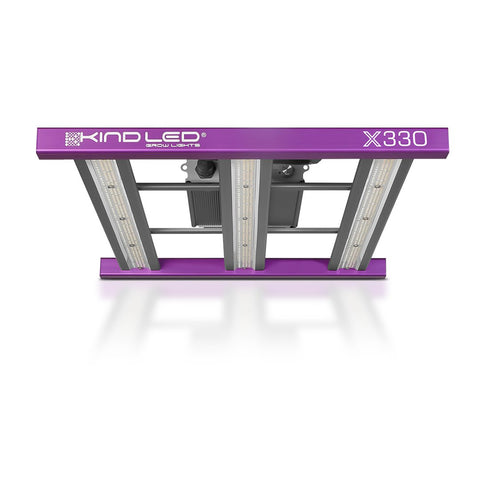Blog
The Complete Beginner's Guide to Grow Lights: LED Selection Made Simple in 2025
Starting an indoor garden in 2025 has never been easier, but the sheer number of LED grow light options can feel overwhelming. The good news? You don't need a degree in horticulture to pick the right light for your plants. This guide cuts through the marketing fluff and gives you the straightforward facts you need to make a smart choice.
LED grow lights have completely revolutionized indoor gardening. They're more energy-efficient than older technologies, they last longer, and they give you precise control over the light spectrum your plants receive. But here's the thing: not all LEDs are created equal, and what works for your neighbor's tomato setup might not work for your herbs.
Why LED Grow Lights Are Perfect for Beginners
Energy Efficiency That Actually Saves Money
LEDs consume about 50-80% less power than traditional grow lights while producing the same amount of usable light. This isn't just good for the environment: it's great for your electric bill. A typical 300-watt LED can replace a 600-watt HPS light, cutting your energy costs in half right from the start.
They Run Cool (And That Matters More Than You Think)
Traditional grow lights get hot. Really hot. Hot enough to burn your plants if you position them wrong, and hot enough to require expensive ventilation systems. LEDs run much cooler, which means you're less likely to accidentally fry your seedlings during those first few learning experiences.
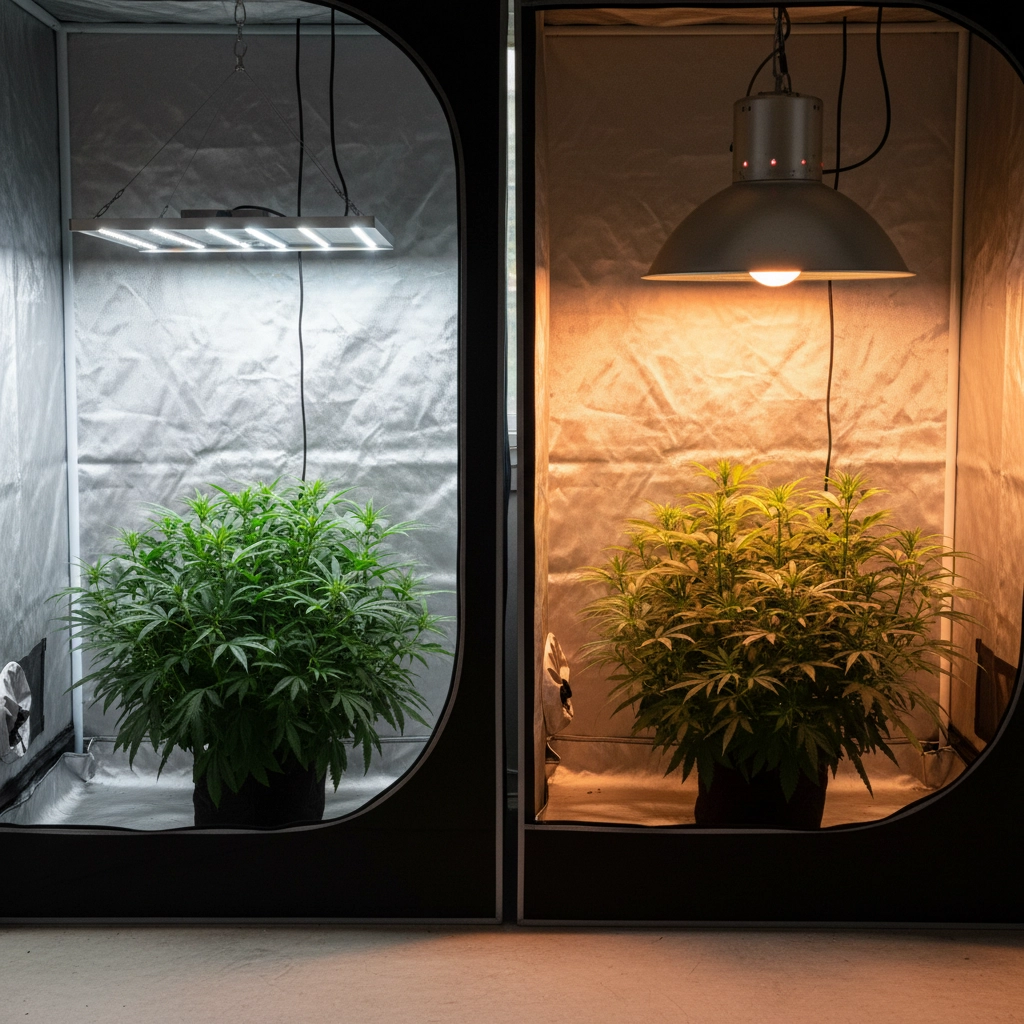
Built to Last
A quality LED grow light can run for 50,000+ hours. Compare that to fluorescent bulbs (10,000 hours) or HPS lights (24,000 hours), and you start to see the value. You'll be replacing traditional bulbs 2-5 times before your LED even starts to dim.
Full Spectrum Control
Modern LEDs can provide the full spectrum of light that plants need, from the blue light that promotes vegetative growth to the red light that triggers flowering. Some advanced models even let you adjust the spectrum as your plants grow.
Understanding Different Types of LED Grow Lights
Full-Spectrum LED Panels
These are the most popular choice for beginners, and for good reason. Full-spectrum LEDs produce white light that contains all the wavelengths plants need. They're plug-and-play simple: you hang them up, plug them in, and your plants get balanced nutrition throughout their entire lifecycle.
Blurple LEDs (The Purple Lights)
You've probably seen these: they cast everything in an eerie purple glow. Blurple LEDs use separate red and blue diodes to target specific wavelengths plants use for photosynthesis. They're often cheaper than full-spectrum lights, but the purple light makes it hard to spot plant problems early.
COB (Chip-on-Board) LEDs
COB LEDs pack multiple LED chips onto a single circuit board, creating intense, focused light. They're excellent for penetrating dense canopies, but they can be more complex to set up and often require additional cooling.
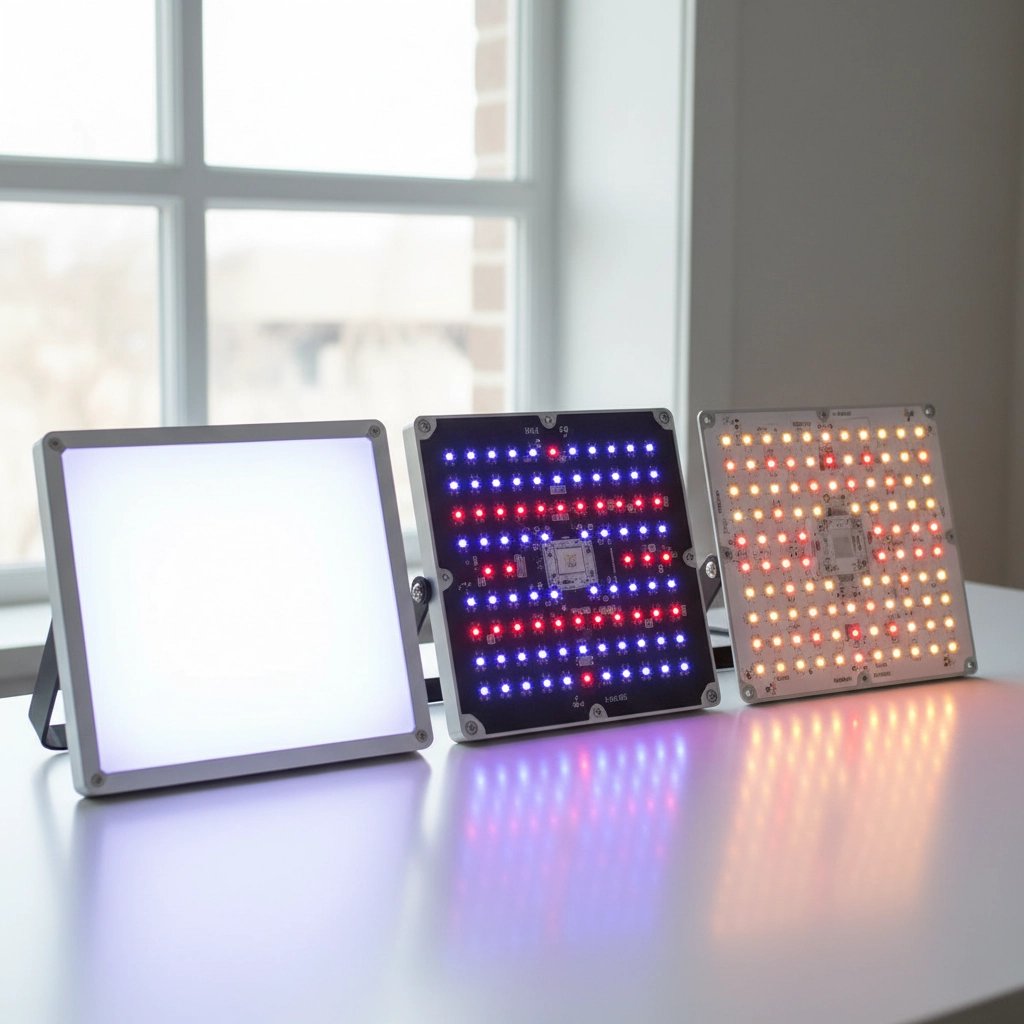
Quantum Boards
These spread hundreds of small LED chips across a large board, creating even light distribution without hot spots. They're energy-efficient and produce excellent results, but they tend to cost more upfront.
How to Choose the Right LED for Your Space
Step 1: Measure Your Growing Area
This seems obvious, but you'd be surprised how many people skip this step. Measure the length and width of your growing space, not just your tent or room. Most LED manufacturers provide coverage recommendations, but here's a reality check: their "coverage area" often assumes you're growing lettuce, not light-hungry plants like tomatoes or peppers.
For intense crops, plan on covering about half the manufacturer's suggested area. If they say their light covers 4'x4', treat it like a 3'x3' light for better results.
Step 2: Calculate Your Power Needs
A good rule of thumb for beginners: aim for 30-50 actual watts per square foot for most plants. Note the emphasis on "actual watts": not the "equivalent watts" some manufacturers advertise. If you're growing in a 2'x4' space (8 square feet), you'll want an LED that draws 240-400 actual watts from the wall.
Step 3: Consider Your Budget (And Hidden Costs)
Entry-level LEDs start around $100-200 for small spaces, while premium options can run $500+. But don't forget about accessories: you'll need a timer (essential), possibly a dimmer, and maybe additional mounting hardware.
Budget for 10-20% extra on accessories. It's better to buy a slightly less powerful light and proper accessories than to blow your entire budget on the light alone.
Setting Up Your LED Grow Light System
Getting the Height Right
Start with the manufacturer's recommendations, but expect to adjust. Most LEDs should hang 12-24 inches above your plants, but this varies dramatically based on power and plant type. Here's how to tell if you're in the right range:
- Too close: Leaves bleach white or curl upward
- Too far: Plants stretch tall and spindly, seeking light
- Just right: Compact, healthy growth with vibrant green color
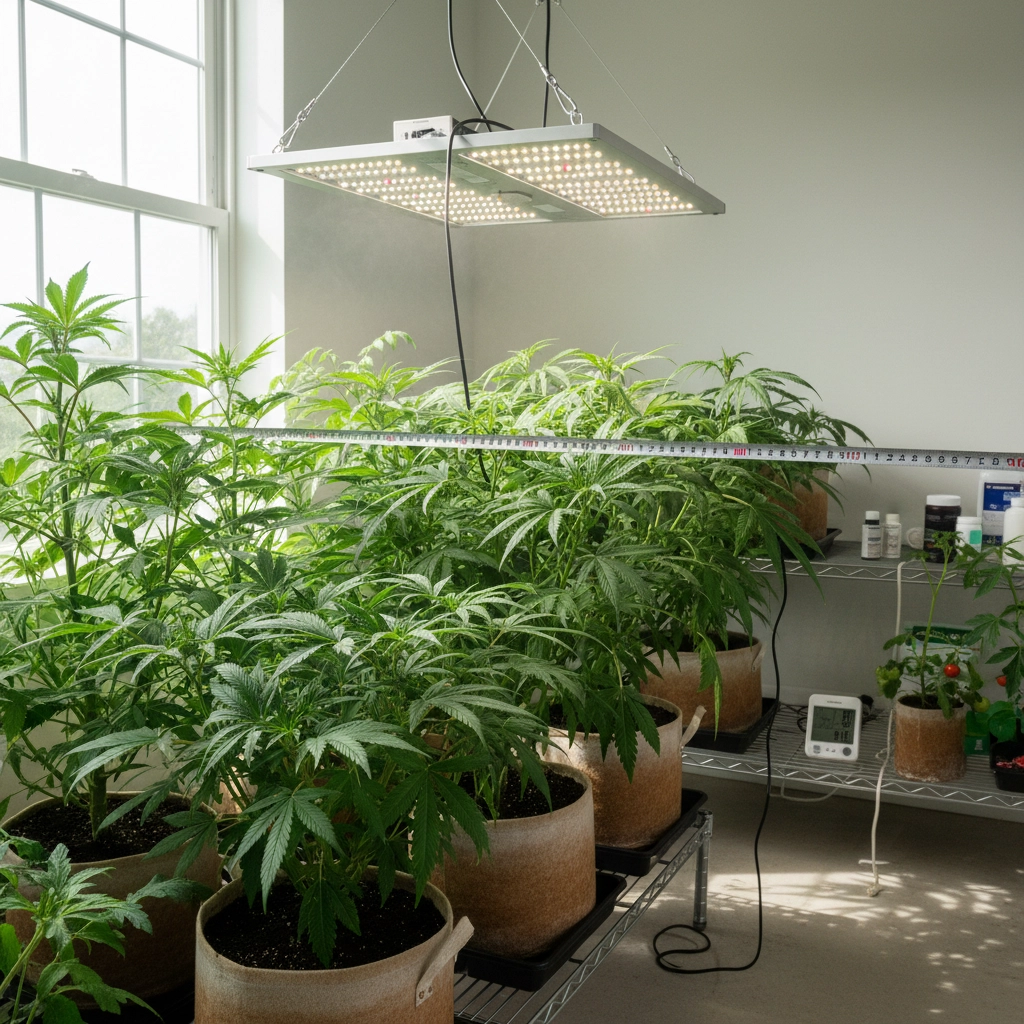
Creating Even Coverage
Hang your light parallel to your growing surface and position it so the brightest area covers the center of your plants. If you're using multiple smaller LEDs instead of one large one, overlap their coverage areas by about 20% to avoid dark spots.
Using Timers Effectively
Most plants need 12-18 hours of light per day, depending on their type and growth stage. Invest in a quality timer: not the $5 hardware store special. Digital timers with multiple on/off cycles give you more control and tend to be more reliable.
Vegetative plants typically need 18 hours of light, while flowering plants do better with 12 hours of light and 12 hours of darkness.
Common Mistakes to Avoid
Buying Based on "Equivalent Wattage"
Marketing departments love to claim their 100-watt LED is "equivalent to a 400-watt HPS." These numbers are often meaningless. Focus on actual power draw and coverage area instead.
Ignoring Heat Management
Even though LEDs run cooler than traditional lights, they still produce some heat. In small, enclosed spaces like grow tents, you might still need ventilation. Monitor your growing area's temperature: most plants prefer 65-75°F.
Positioning Lights Incorrectly
Many beginners either hang their lights too high (wasting energy and getting poor results) or too low (stressing plants). Start conservatively and move closer gradually while watching your plants' response.
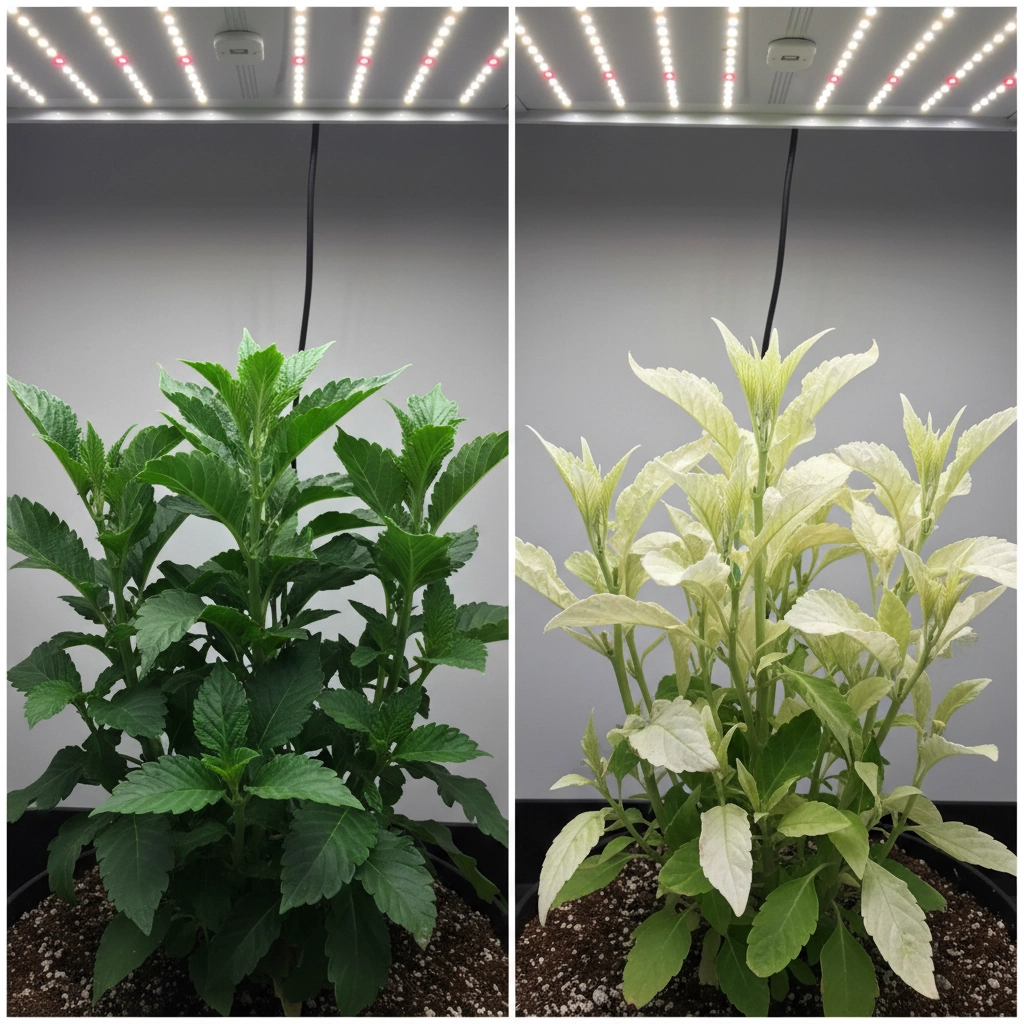
Skipping the Research on Specific Models
Not all LEDs in the same price range perform equally. Spend time reading reviews from actual growers, not just product descriptions. Look for information about long-term reliability and customer service quality.
KIND LED Grow Lights
If you're ready to step up to a proven, pro-grade fixture, KIND LED’s X-Series is a strong choice for beginners and experienced growers. Expect efficient diodes, dimmable output, and even canopy coverage that keeps internodes tight without blasting seedlings. Caution: match the fixture size to your footprint and target PPFD; review coverage charts before you buy.
Making Your Final Decision
For most beginners, a full-spectrum LED panel from a reputable manufacturer offers the best balance of performance, ease of use, and value. Brands like Mars Hydro, Spider Farmer, and Viparspectra offer solid entry-level options, while companies like HLG provide premium performance for those willing to invest more upfront.
Consider starting with a slightly smaller light than you think you need. It's easier to add a second light later than to deal with heat issues or wasted energy from an oversized fixture.
The fact of the matter is, LED grow lights have made indoor gardening accessible to everyone. You don't need to be an expert to get great results: you just need to understand the basics and avoid the common pitfalls that trip up new growers.
Remember, the best grow light is the one that fits your space, your budget, and your growing goals. Take your time with the selection process, and don't be afraid to start small. You can always expand your setup as you gain experience and confidence.
Your plants will thrive under quality LED lighting, and you'll wonder why you waited so long to start growing indoors. The technology has never been better, the prices have never been more reasonable, and the results speak for themselves.

